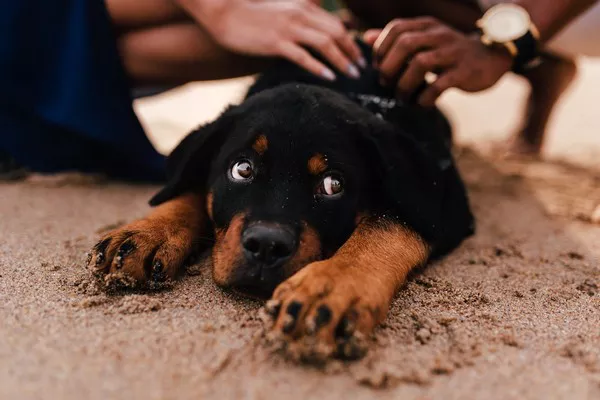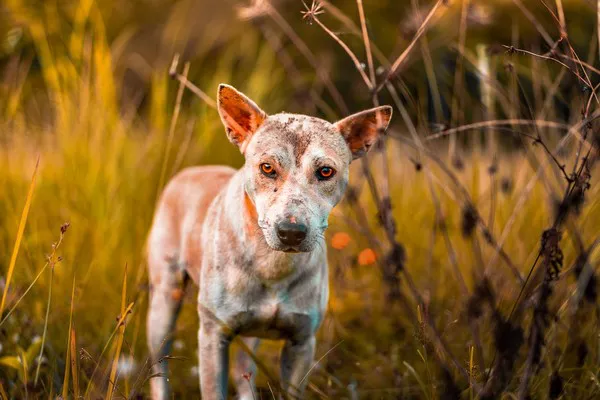The Shar-Pei is a distinctive breed known for its wrinkled skin and unique coat types. Originating from China, the breed was traditionally used for hunting and guarding, and has since become a beloved companion around the world. Shar-Peis come in two primary coat types: the brush coat and the horse coat. Each type has its own unique characteristics, including differences in appearance, care requirements, and potential health concerns. This article delves into the specifics of both coat types, exploring their differences and providing detailed insights into their care and maintenance.
What Sets the Shar-Pei Brush Coat and Horse Coat Apart?
Brush Coat Characteristics
The brush coat Shar-Pei is characterized by its soft, velvety fur that stands off the body. The hair length typically ranges from half an inch to one inch. This coat type gives the Shar-Pei a plush, almost teddy bear-like appearance. The brush coat is the more common variety seen in the breed today, and its soft texture is often more appealing to pet owners who prefer a cuddlier companion.
Horse Coat Characteristics
In contrast, the horse coat Shar-Pei has a much shorter and rougher coat. The hair is usually less than half an inch in length, and it lies flat against the body. The texture is coarse and bristly, resembling the hide of a horse, which is how this coat type got its name. The horse coat Shar-Pei has a more traditional look, reminiscent of the breed’s origins. This coat type often gives the dog a more rugged and athletic appearance.
Color Variations
Both brush coat and horse coat Shar-Peis can come in a variety of colors, including black, red, fawn, cream, and blue. The color does not typically influence the texture or length of the coat, although some colors might be more common in one coat type than the other due to breeding practices.
Does Coat Type Affect Personality of Shar-Pei?
Brush Coat Temperament
The temperament of a brush coat Shar-Pei is often described as more laid-back and gentle. These dogs are usually more amenable to being handled and petted, which makes them ideal for families with children or for individuals looking for a more affectionate companion. The softer fur texture might contribute to their more relaxed demeanor, as they tend to enjoy being groomed and cuddled.
Horse Coat Temperament
Horse coat Shar-Peis are typically more energetic and alert. They tend to have a higher drive for activities such as playing and guarding. This coat type is often associated with the breed’s traditional roles, and these dogs might be more independent and wary of strangers. While they can still be affectionate with their families, they are often more reserved and can be more challenging to train due to their strong-willed nature.
How Do You Care for Each Coat Type of Shar-Pei?
Grooming Brush Coat Shar-Pei
Brush coat Shar-Peis require regular grooming to keep their fur in good condition. Their longer fur can be prone to tangling and matting if not brushed frequently. It is recommended to brush them at least once or twice a week using a soft-bristle brush to remove loose hair and prevent mats. Regular baths are also necessary to keep their skin healthy and clean, although over-bathing should be avoided to prevent skin dryness.
Specific Grooming Tips:
Brushing: Use a soft-bristle brush or a grooming mitt to gently remove loose fur and debris.
Bathing: Bathe every four to six weeks using a mild dog shampoo.
Skin Care: Pay special attention to the folds of skin, ensuring they are clean and dry to prevent infections.
Grooming Horse Coat Shar-Pei
Horse coat Shar-Peis are generally easier to groom due to their shorter, coarser fur. They do not require as much brushing, but they still benefit from regular grooming to remove dead hair and distribute skin oils. A rubber curry brush or grooming mitt works well for this coat type. Horse coat Shar-Peis also need regular baths, but their skin tends to be less prone to irritation than that of brush coat Shar-Peis.
Specific Grooming Tips:
Brushing: Use a rubber curry brush to remove loose hair and stimulate the skin.
Bathing: Bathe every six to eight weeks with a gentle dog shampoo.
Skin Care: Ensure the skin folds are kept clean and dry to prevent bacterial infections.
Are There Differences in Health Issues Between Coat Types?
Common Health Issues in Brush Coat Shar-Peis
Brush coat Shar-Peis are prone to a range of health issues, many of which are related to their skin and fur. Their longer fur and numerous skin folds can create a breeding ground for bacteria and fungi, leading to skin infections such as pyoderma. Additionally, they are more susceptible to conditions like atopic dermatitis and seborrhea.
Specific Health Concerns:
Skin Infections: Regular cleaning of skin folds and prompt treatment of any signs of infection are crucial.
Allergies: Brush coat Shar-Peis can be prone to environmental and food allergies, requiring careful management and potentially hypoallergenic diets.
Eye Issues: Conditions like entropion (inward turning of the eyelids) are common and may require surgical intervention.
Common Health Issues in Horse Coat Shar-Peis
Horse coat Shar-Peis tend to have fewer skin problems due to their shorter and less dense fur. However, they can still suffer from typical Shar-Pei health issues such as hip dysplasia and Shar-Pei fever, a hereditary condition characterized by episodic fever and swelling. Their eyes can also be prone to entropion, which may require surgical correction.
Specific Health Concerns:
Hip Dysplasia: Regular vet check-ups and maintaining a healthy weight can help manage this condition.
Shar-Pei Fever: Recognizing the symptoms early and managing the condition with veterinary guidance is essential.
Eye Issues: Similar to brush coat Shar-Peis, they can suffer from entropion and may need surgical treatment.
Do Coat Types Influence Feeding Habits of Shar-Pei?
Feeding Brush Coat Shar-Pei
The dietary needs of a brush coat Shar-Pei are similar to those of any other Shar-Pei, but their susceptibility to allergies means that a high-quality, hypoallergenic diet is often necessary. Protein sources such as fish or novel meats like venison can be beneficial. Additionally, a diet rich in omega-3 fatty acids can help maintain skin health and reduce inflammation.
See Also: Why Shar Peis Have Wrinkles?
Specific Dietary Tips:
High-Quality Protein: Ensure the diet includes high-quality animal protein.
Omega-3 Fatty Acids: Supplement with fish oil or flaxseed oil to support skin health.
Hypoallergenic Options: Consider hypoallergenic kibble or home-cooked meals to manage allergies.
Feeding Horse Coat Shar-Pei
Horse coat Shar-Peis generally have similar dietary needs but might have fewer issues with food allergies compared to brush coat Shar-Peis. However, they still benefit from a balanced diet rich in protein and essential nutrients. Monitoring their weight and adjusting portions to maintain a healthy physique is crucial.
Specific Dietary Tips:
Balanced Diet: Provide a well-balanced diet with high-quality ingredients.
Weight Management: Monitor food intake to prevent obesity, which can exacerbate joint issues.
Hydration: Ensure they have constant access to fresh water to stay hydrated and support overall health.
Differences in Training Shar-Pei Brush Coat vs Horse Coat
Training Brush Coat Shar-Pei
Brush coat Shar-Peis are often more amenable to training due to their calmer nature. Positive reinforcement methods work well, as these dogs respond best to gentle guidance and rewards. Early socialization and consistent training are key to managing any potential behavioral issues and ensuring they grow up to be well-adjusted adults.
Specific Training Tips:
Positive Reinforcement: Use treats, praise, and play to reward good behavior.
Socialization: Introduce them to a variety of people, animals, and environments from a young age.
Consistency: Maintain a consistent training schedule and approach.
Training Horse Coat Shar-Pei
Horse coat Shar-Peis can be more challenging to train due to their independent and sometimes stubborn nature. They require a firm but fair approach, with consistent boundaries and expectations. Early socialization is equally important, and they might benefit from more structured training programs or professional guidance.
Specific Training Tips:
Firm and Fair: Establish clear rules and be consistent in enforcing them.
Early Socialization: Expose them to diverse experiences to build confidence and reduce fearfulness.
Professional Training: Consider enrolling in obedience classes or seeking professional help if needed.
Conclusion: Which Coat Type is Right for You?
Choosing between a brush coat and horse coat Shar-Pei ultimately comes down to personal preference and lifestyle. Both coat types have their unique characteristics and care requirements. Brush coat Shar-Peis are often more cuddly and easier to train, making them ideal for families or individuals looking for a more affectionate pet. Horse coat Shar-Peis, with their rugged appearance and independent nature, might appeal to those who appreciate a more traditional look and are prepared for a more spirited companion.
In summary, understanding the differences between brush coat and horse coat Shar-Peis can help prospective owners make an informed decision. Both types are equally loyal and loving, offering the unique charm that the Shar-Pei breed is known for. Whether you choose a brush coat or a horse coat, providing them with proper care, training, and love will ensure a happy and healthy life for your Shar-Pei.
Related Topics:


























